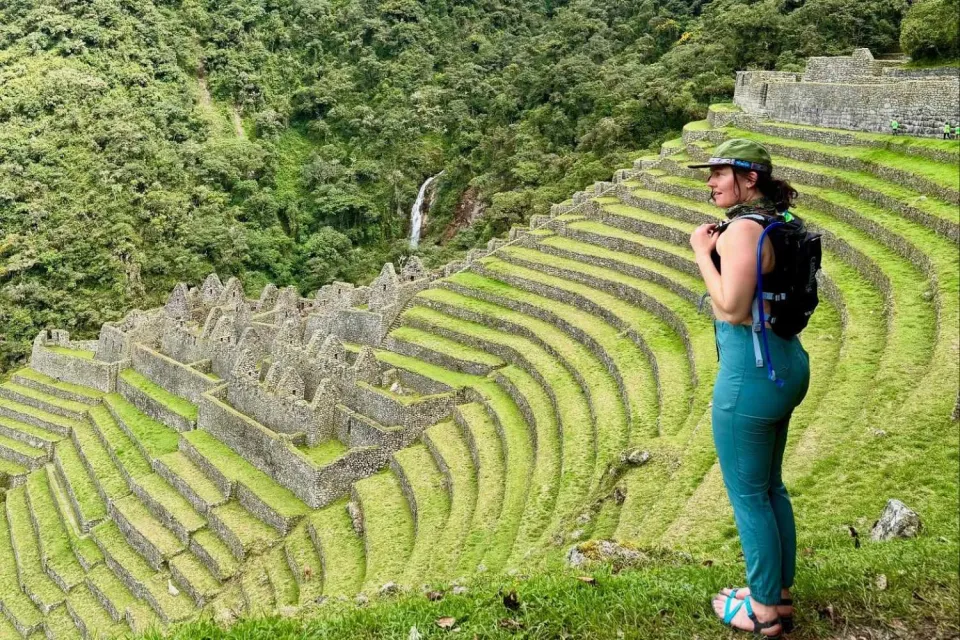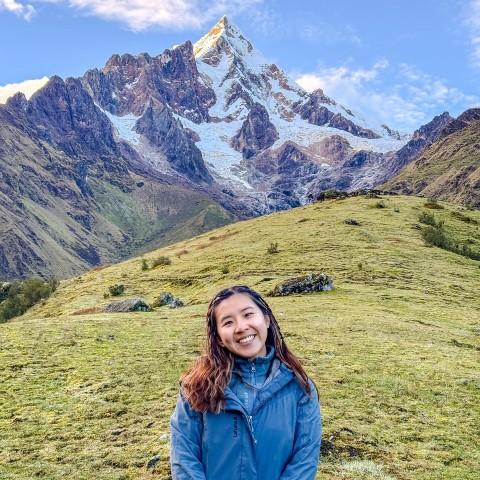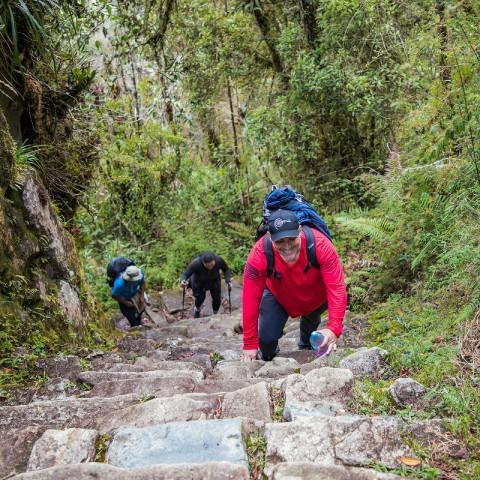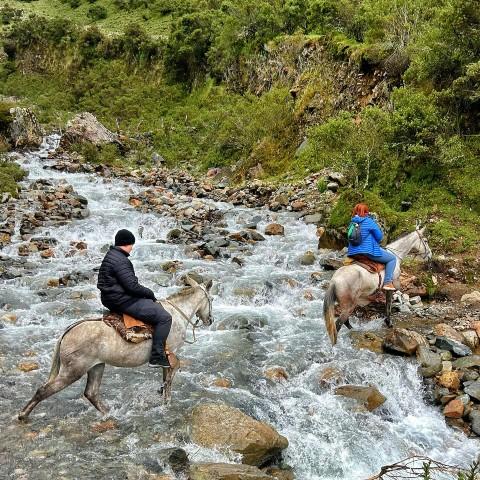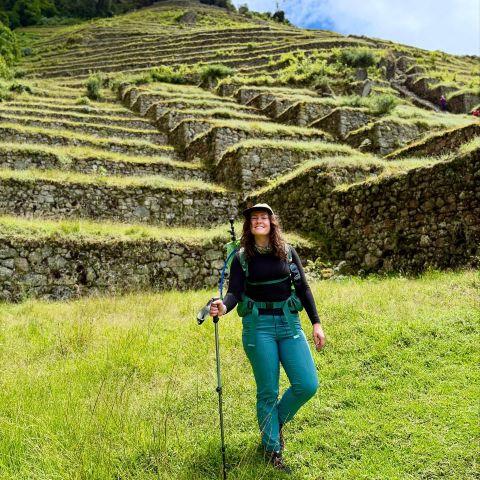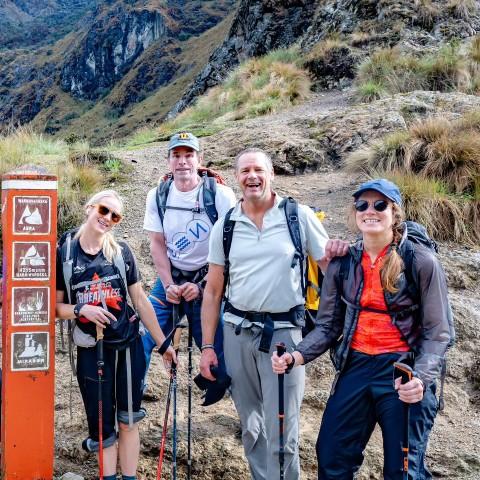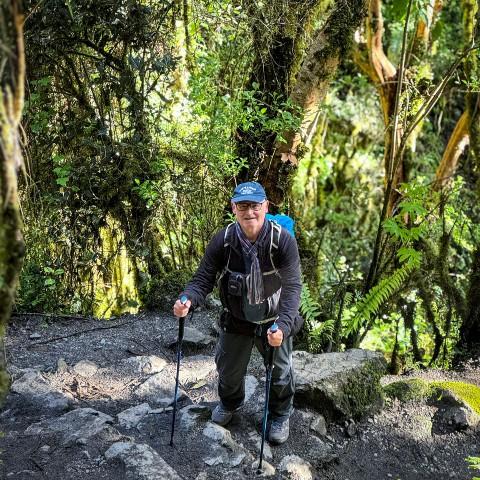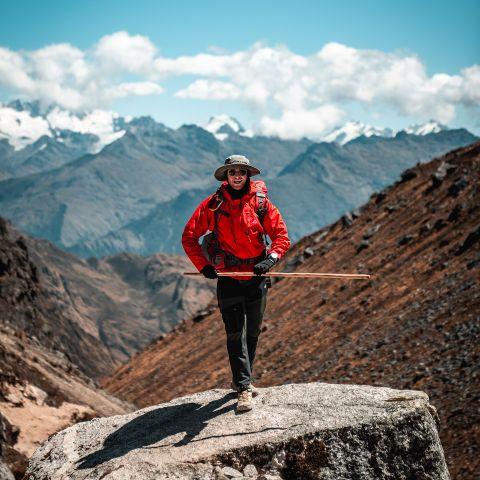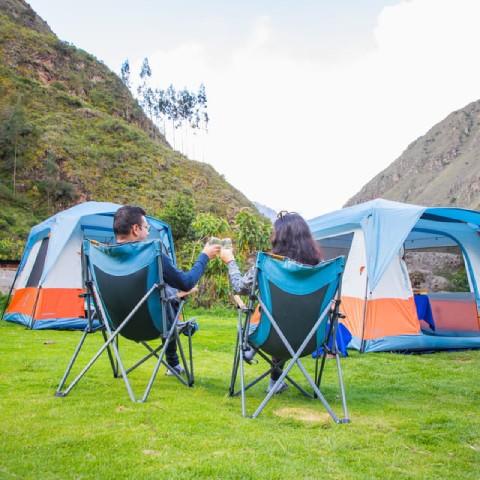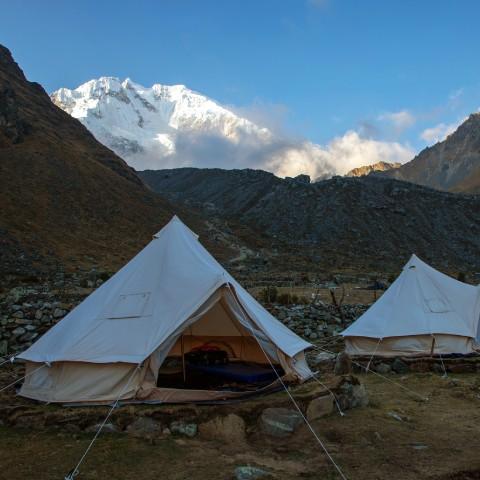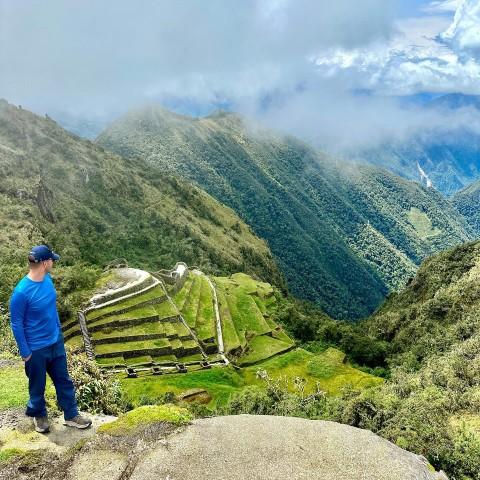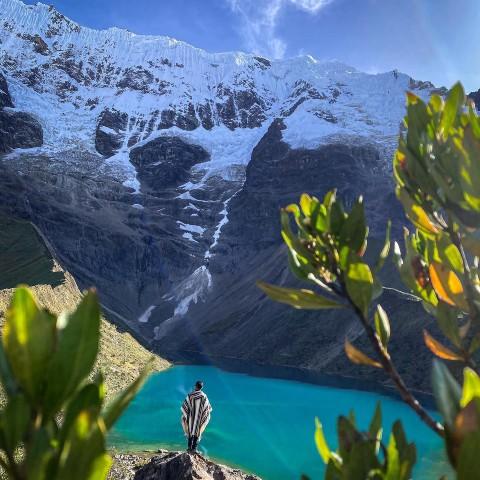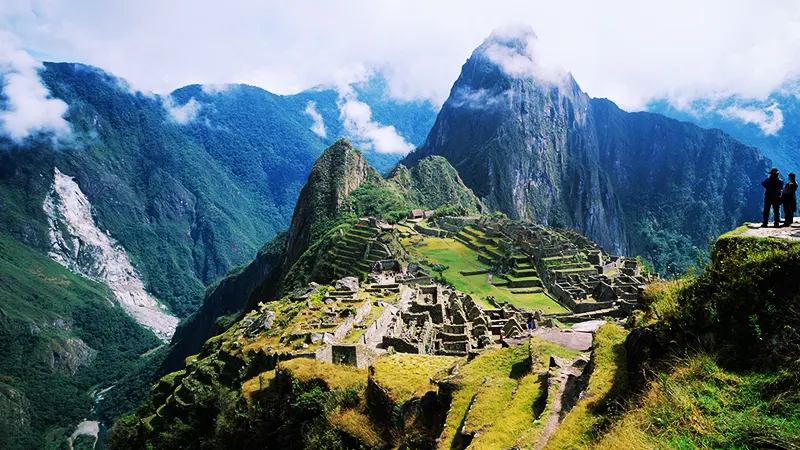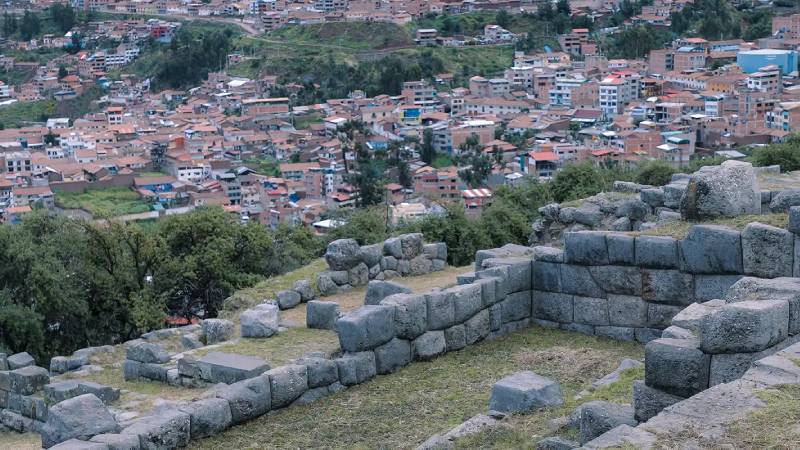Are you ready for one of the most exciting adventures of your life? If you have decided to hike to Machu Picchu, you are probably facing a fundamental question: Which of the two routes should you choose, the Inca Trail vs the Salkantay Trek?
In this article, we will compare these two routes in detail to help you make the right decision for your adventure - read on to find out everything you need to know before making your choice!
What is the best route to Machu Picchu?
As you begin to research the Inca Trail vs Salkantay Trek, you may find yourself with many questions. What is the difference between these two routes? How difficult is each? What scenery and experiences can I expect on each?
We are going to solve all these doubts in a simple and clear way so you can make an informed decision
Inca Trail vs Salkantay Trek: What is the main difference?
Both treks are popular treks to Machu Picchu, but each has unique characteristics that make them different in terms of difficulty level, scenery, duration and overall experience. Below, we will compare these two treks according to different key aspects.
What is the Inca Trail?
The Inca Trail is one of the most famous treks in the world. This approximately 43-kilometer route runs along a section of the Qhapac Ñan, which the Incas used to reach Machu Picchu.
This route is famous for its archaeological ruins and breathtaking scenery, which make walking along it a unique experience.
What is the Salkantay Trek?
The Salkantay Trek is an alternative route to the Inca Trail, usually a bit longer and more challenging than the Inca Trail.
With a distance of approximately 74 kilometers, the Salkantay Trek offers a unique experience for adventurers seeking more varied landscapes and a greater challenge.
This route takes travelers through mountains, valleys and forests, with breathtaking views of the Apu Salkantay (the sacred mountain of the Incas) and the majestic Peruvian nature.
Inca Trail vs Salkantay Trek: What is the best trail for you?
Duration
How long does the Inca Trail take?
The Inca Trail normally takes 4 days to complete, although there is a shorter 2-day version for those who prefer a lighter experience.
How long is the Salkantay Trek?
The Salkantay Trek is usually completed in 5 days, although there is also a shorter 4-day version.
The main difference between the two is the pace and the amount of places you can explore.
Distance
The distance of both routes varies according to the itinerary and the chosen path. So if you find different figures on other websites, don't be surprised.
Each operator may offer slight variations in the route, which affects the total distance of the tour.
- Inca Trail: The Inca Trail travels a total of 43 kilometers (26 miles) to Machu Picchu.
- Salkantay trek: The Salkantay Trek is usually slightly longer than the Inca Trail, with a total distance of approximately 60 kilometers (37 miles).
Difficulty
The perception of difficulty may vary according to the physical condition of each person.
Inca Trail
Although the Inca Trail is considered moderate and therefore relatively more accessible for travelers, it still presents challenging sections, especially on the second and last day.
The main difficulty lies in the altitude at which you will have to ascend, which can cause altitude sickness.
In addition, the last day includes a steep staircase to reach Inti Punku, which adds an additional challenge.
Salkantay Trek
The Salkantay Trek, on the other hand, is much more challenging due to its higher altitude and more varied terrain.
It is recommended for trekkers with experience in high mountain treks and in good physical condition.
Landscape: Which route offers the best views?
Both routes offer breathtaking scenery, but are quite different in terms of what you can see:
Inca Trail
If you choose the Inca Trail, you will marvel at Inca archaeological ruins and an incredible variety of ecosystems. From cloud forests to high mountains, this route offers an immersion into the history of the Incas, making it one of the most historic experiences.
Along the Inca Trail, you can explore impressive ruins such as Patallacta, Runkuraqay, Sayacmarca, Phuyupatamarca, Intipata, Wiñaywayna and the Sun Gate (Intipunku).
Salkantay Trek
The Salkantay Trek offers a wilder and more natural landscape. During the trek, you will enjoy views of impressive mountains, high altitude lagoons such as the Humantay Lake, and large valleys.
The Salkantay mountain is the star of this route, with its imposing presence throughout the trek.
In addition, you will have the opportunity to live with the local people and learn about their customs, which will enrich your experience with a deep cultural connection.
Maximum altitude
What is the maximum altitude of the Inca Trail?
The maximum altitude of the Inca Trail is reached on the second day, when you must conquer the Dead Woman's Pass (Warmiwañusqa), at 4,215 meters above sea level.
The climb takes approximately 6 hours, followed by a 2-hour descent. In this stretch, many trekkers feel the effects of the altitude, so it is essential to advance at a steady pace and be well hydrated.
Later, you will face the Runkurqay Pass, at 4,000 meters above sea level, the second great challenge of the route.
Here it is also possible to experience the symptoms of altitude sickness, but do not worry: our team will be at your side to provide the necessary support and help you overcome any difficulties.
What is the maximum altitude of the Salkantay Trek?
The highest point of the Salkantay Trek is the Salkantay Pass, at 4,650 meters above sea level, exceeding the maximum altitude of the Inca Trail by 435 meters.
Although it may seem more demanding and with a higher risk of altitude sickness, the Salkantay Trek allows a better adaptation.
You will only walk at high altitude for the first two days; then, you will descend into the cloud forest, where the altitude drops dramatically to about 2,600 meters above sea level.
From this point on, you will not have to ascend any further, and the climate becomes much warmer and more pleasant.
Climate
The climate on both routes depends on altitude and season, but there are key differences that may influence your choice.
Inca Trail
The climate on the Inca Trail is more stable and humid as it passes through cloud forest. Humidity remains constant and, in certain sections, the wind chill can become cooler.
This varies slightly depending on the time of year you hike.
- Dry season (May - September): Sunny days with temperatures between 18°C and 25°C, but nights can drop to 0°C at higher camps.
- Rainy season (November - March): Higher humidity and frequent rains, which can make the trail slippery and more challenging.
Salkantay Trek
The weather during the Salkantay Trek is more extreme and varied, as you will go from freezing to warm temperatures. The intensity of the temperature varies a bit depending on the time of year you trek
- High zone (first two days, up to 4,650 masl): Cold temperatures, with maximums of 10°C to 15°C during the day and minimums of up to -5°C at night.
- Descent into the cloud forest: After the Salkantay Pass, the climate changes drastically to a warmer and more humid environment, with temperatures ranging from 15°C to 25°C (59°F to 77°F).
- Rainy season: From November to March, the weather is unpredictable, with frequent rains and more cloud cover.
What is the best season to do both treks?
The dry season is from May to September, due to low rainfall.
The most recommended months for trekking are May and June, as the landscapes are lush and lush, and temperatures are more pleasant.
Availability
Inca Trail
The availability of the Inca Trail is limited, as only 500 people can hike it per day, including guides and porters.
This means that, in reality, only 200 tourists have daily access to the trek. In addition, it is important to keep in mind that for every 8 people, a guide is required.
Therefore, if you wish to hike this section, you should book in advance and be prepared to enjoy the experience to the fullest.
Bonus fact:
The Inca Trail closes during the month of February to carry out maintenance and conservation work at this sanctuary.
Salkantay trek
The Salkantay Trek is available all year round and does not have the quota restrictions of the Inca Trail. However, the size of the trekking group will depend on the tour operator you choose.
Sometimes groups can be large, which may sound like fun, but on a trek, this is not always ideal.
If the group is too large, you may not share the same pace or physical condition as the others, which could hinder your experience.
Therefore, we recommend that you opt for a private tour or a smaller group, ideally no larger than 12-15 people, so that you can enjoy a more comfortable and personalized pace.
Avoiding large groups of more than 30 people will allow for a more relaxed and enjoyable experience.
Accommodation
Inca Trail
During this trek, the only lodging options are the campsites. The porters, who will go ahead of you, will be in charge of carrying everything you need for camping, including food, equipment and tents.
The first three days you will sleep in campsites, and if you are wondering about restrooms, you will find some at specific points along the way or in camping areas.
To make your experience more comfortable, we provide you with a portable toilet, making sure your trip is as easy and comfortable as possible.
Salkantay Trek
On this trek, you have several accommodation options: you can choose to camp, stay in a lodge or choose a more luxurious option, such as the domes, available only on the first day.
The less crowded route of the Salkantay Trek gives you the opportunity to sleep in a campsite with enough space to enjoy a spectacular view of the starry sky at night.
As for bathrooms, don't worry, as on this route you will find more options along the way, thanks to the variety of accommodations available.
Price range
Inca Trail
The cost of a shared or group tour along the Inca Trail is usually between 700 and 800 USD per person, due to the limited amount of spaces available per day.
It is important that you consider adding an additional 200 USD to cover permits and porters.
Here are some key points to help you organize your trip:
- The tour price includes a personal porter to carry your belongings; however, they can only carry a maximum weight. If you exceed that limit, you will have to hire an additional porter on your own or request one more from the agency, which will generate an extra cost.
- When booking the tour, be sure to read all the information in detail, including which services are included and which are not. Although the price may seem more attractive, some tours do not include essential services such as transportation, which could cause delays and cause you to miss flights. This could ruin your trip and generate a negative experience.
Salkantay trek
The average price of this trek varies between $550 and $650, which makes it generally cheaper than the Inca Trail.
Here are some key points to keep in mind:
- Research well the tour operator with whom you will do the trek, and review the experiences of previous travelers.
- Carefully read all the tour information, including the services offered, the route to follow and what is included. Some lower-priced tours may not offer full services such as transportation, substandard accommodations, poor quality food, or underpaid staff.
- Be aware that there may be extra costs, such as horse rental, that will make your tour even more expensive.
- Choose small groups, as if the group is too large, you may not follow the same walking pace as others.
Final tip:
After your visit to Machu Picchu, you are likely to be very tired. If your train schedule is too tight, you will have to run to catch the train, you will not have time for lunch and you will probably sleep during the journey, missing the scenery. So choose a train schedule that allows you to rest.
Food
On both treks, you will have an expert team, including a cook who will be in charge of preparing fresh and delicious food throughout the trip.
However, the menu varies according to the route you choose.
Inca Trail
Every morning, the chef will wake you up with a buffet that, for the first few days, will include fresh fish, chicken and beef. Later on in the trek, vegetarian dishes will be offered.
If you have any dietary restrictions, just let the chef or tour operator know, and they will prepare gluten-free or dairy-free meals according to your needs.
Salkantay Trek
On this route, you will enjoy a more varied menu than on the Inca Trail. One of the most outstanding gastronomic experiences is the Pachamanca, a traditional Andean dish cooked underground.
In addition, you will have the opportunity to taste organic coffee and live a unique experience with the local community. You will learn about the coffee production process and prepare your own cup from scratch.
How crowded is each trek?
Inca Trail
The Inca Trail is very popular and, due to its fame, is often crowded with tourists.
This ensures a more organized experience, but also means that you may encounter more people on your way.
Salkantay Trek
Although the Salkantay Trek is also very popular, it is not as crowded as the Inca Trail.
This can be an advantage if you prefer a quieter, less crowded experience.
Inca Trail vs Salkantay Trek: Which route is best for you?
If you are looking for history and culture
If your main motivation for trekking is Inca history and archaeological ruins, the Inca Trail is the ideal choice.
Along the route, you will come across several important archaeological sites that offer an in-depth look at the ancient Inca civilization.
If you are looking for a physical challenge
If you are looking for a more physically challenging trek, the Salkantay Trek will offer a more challenging experience due to its altitude and rugged terrain.
This route is ideal for those who are in excellent physical shape and are looking for a trek that will test their abilities.
If you are looking for a quieter experience
If you prefer a less crowded trekking experience with more contact with nature, the Salkantay Trek might be more suitable for you.
Although it is also popular, it is less crowded than the Inca Trail and offers spectacular views without as many people.
Tips and Recommendations for Trekking
Prepare yourself physically
Both routes require a good level of endurance, so do previous hikes, cardiovascular exercises and strengthen your legs to better cope with the altitude and long distances.
Acclimatize before the trek
Arrive in Cusco at least 2 or 3 days before to adapt to the altitude and reduce the risk of altitude sickness. During those days, avoid alcohol, drink plenty of water and rest well.
Choose the best season
The best time to do these routes is between April and October, when the weather is drier. During the rainy season (November to March), the roads become slippery and more demanding.
Carry the right gear
- Wear a comfortable, lightweight backpack.
- Wear layered clothing to adapt to the cold and heat.
- Wear waterproof trekking shoes with good grip.
- Protect your skin with a hat, sunglasses and sunscreen.
- Pack a rain poncho or waterproof jacket.
- Use trekking poles to reduce the impact on your knees.
Hydrate and take care of your diet
- Drink water constantly with a reusable bottle and opt for light but energetic meals to maintain your performance during the hike
- Respect the environment and local culture
- Pick up your trash and keep the route clean.
- Follow the rules of the National Park.
- Interact with the local community with respect and learn about their customs.
Book in advance
If you are going to trek the Inca Trail, secure your quota by booking in advance. For the Salkantay Trek, you have more flexibility, but it is best to be informed and make your reservation several months in advance.
Conclusion: Which one to choose, Inca Trail vs Salkantay Trek?
In summary, the choice between the Inca Trail and the Salkantay Trek depends on your personal preferences.
If you are looking for a historical and cultural experience with unique landscapes, the Inca Trail is perfect.
If you prefer a greater physical challenge and wish to experience the wildest nature, the Salkantay Trek will offer you all that and more.
Both treks will take you to the impressive Machu Picchu, but the route you choose will depend on your level of experience, your personal interests and what you are looking for in this epic adventure.
Remember, no matter which route you choose, both trails offer breathtaking views and an unforgettable experience, so get ready for the adventure of a lifetime!
Frequently Asked Questions
- Is the Inca Trail dangerous?
No, don't worry, the routes are well signposted and you will always have a guide by your side.
If you hike during the rainy season, wear non-slip shoes to avoid slipping.
- Is there a tour that combines these two trekking routes?
Yes, these options emerged recently because many tourists had difficulty choosing between the two treks.
Now we also offer a new route: Salkantay + Inca Trail in 6 days, combining the best of both experiences.
- Is it advisable to do it on your own?
No, on the Inca Trail it is totally forbidden to do the trek alone, even for Peruvians.
On the other hand, in the Salkantay Trek, it is possible to do it alone if you have a lot of trekking experience.
However, there have been cases of tourists who have strayed from the trail and ended up in remote villages, so it is always advisable to go accompanied or with a guide.
- Can both routes be done with children?
Yes, but children must be at least 8 years old and in good physical condition to keep up with the pace of the hike.
If you prefer a more flexible route, you can opt for a private tour, which will allow you to advance at your own pace and prevent your children from overexerting themselves.
- Is there wifi during both hikes?
Yes, but not on the entire trail.
On the Inca Trail, you will have signal only on the last days, especially after passing Wiñay Wayna.
On the Salkantay Trek, the signal varies by sections; in some areas you will have coverage, while in others you will not.
- Will there be places where I can charge my devices?
On the Inca Trail, there will be no places to charge your devices, so you will need to carry portable chargers.
On the Salkantay Trek, you will be able to charge your devices in the lodges available along the trail.
- What is the smallest group for the Inca Trail?
The Inca Trail groups are open from 2 people. If you want a private tour, please note that you must be accompanied by at least one other person.

